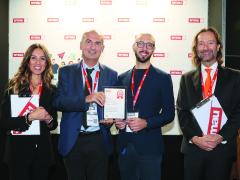Self-service IT support, built on up-to-date knowledge articles, is a strategic organisational asset, according to Manqoba Masina, Operations Manager at Nkgwete IT Solutions, who shares his educated insights about "helping yourself" with your IT challenges.

Everyone will understand through the pain of experience that things can, and do, go wrong with technology. As efficient as devices and software make our lives, downtime can have a significant impact on personal productivity and business outputs. Where there is technology, there needs to be IT support. However, the world is not the same as it was 15 years ago and as such, there is a need for faster, more agile support.
The IT landscape is almost unrecognisable from just a few short years ago. People have become increasingly tech-savvy – perhaps not to the level of an IT engineer but certainly to a point of being able to navigate their way around devices and new software. In other words, in the workplace there has been a definite generational shift towards a degree of digital self-sufficiency.
However, IT desks are busier than they’ve ever been. Raising a ticket and waiting for it to be resolved is often just too long in the modern world. Here, we are talking about eight hours, or a day, versus immediate self-service. Let’s consider a scenario where this rings true.
Imagine for a moment that your manager asks you to prepare an important report for an even more important presentation. You have a clear deadline. Everything goes well, you are making final tweaks to the report you have saved to your hard drive and just before you are about to send it, your screen display flips upside down – it happens!
You look at the clock and realise your deadline is 10 minutes away. Raising a ticket will not solve your immediate problem: When you move your mouse down, the cursor goes up, when you want to navigate to the bottom left, the cursor goes to the top right. Waiting for a ticket to be resolved will definitely see you miss your important deadline.
On the other hand, imagine using your smartphone to navigate a user-friendly self-service application. You type in a quick search and get comprehensive step-by-step instructions on how to fix the screen’s orientation. You do so and the problem is solved in less than five minutes. You send off the report, and the boss and stakeholders are happy. Crisis averted!
We are well and truly into the age where comprehensive knowledge articles can be leveraged by IT support professionals to build a digital support ecosystem. A digital engineer on call 24/7, so to speak. Knowledge articles are digital, self-service resources providing step-by-step technical guidance to solve technology problems. The best ones, run by expert IT support companies, are living platforms, with continuously updated databases as technology evolves and as more potential problems and their resolutions are discovered. They are designed to empower end users with immediate solutions to their IT issues.
Knowledge articles built into user-friendly interfaces can take on a two-tier approach. There can be a technical tier with detailed guides for IT professionals. These would include in-depth troubleshooting protocols and advanced technical configurations. The purpose of this tier would be to facilitate complex problem-solving for technicians.
An end-use tier would comprise simplified, step-by-step instructions to solve simpler issues. In other words, this tier would be tailored for non-technical users and comprises practical, easy-to-follow instructions with accessible language and clear formatting.
When managed correctly and deployed properly, knowledge articles:
- Enable independent technical problem solving,
- Provide comprehensive software application understanding which increases productivity (almost everyone uses Microsoft Word, but almost no-one understands the depths of features they are missing out on using),
- Reduce IT support team dependency and preserve institutional knowledge,
- Are accessible across various devices, 24/7.
- No geographical and time constraints on using the service – which makes it an ideal support solution for late night or odd hour working and travelling.
This represents significant cost savings for organisations. Despite these savings, they can still ensure their staff have access to IT support when they need it in order to stay productive. On the topic of productivity, take Microsoft 365, for example. The use of self-service functionality – built on comprehensive and up-to-date knowledge articles – radically reduces technology learning curves and unlocks a deeper understanding of the unused tools at employees’ disposal.
The flip side of the coin is that a good knowledge article strategy ensures that IT support businesses derisk themselves from IP loss when a staff member transitions to another department or leaves the organisation. This ensures continuity and uninterrupted service. In addition to that, knowledge articles mitigate mentor dependency challenges and facilitate smoother onboarding processes. The whole point behind the living ecosystem is to create dynamic, evolving knowledge repositories.
Technology is evolving at a lightning pace and new trends and technologies keep both businesses and their support teams on their toes. As such, businesses would do well to seek out IT support partners that understand the transformative potential, competitive advantage and future-proofing that a well-designed, monitored and regularly updated knowledge articles strategy unlocks. There’s no need to be stuck in a 2009 help desk bottleneck – knowledge articles built into a self-help portal are a strategic organisational asset.














